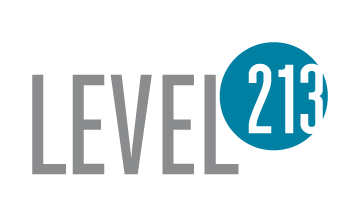Have We Gotten Stuck in Old Patterns? Exploring Dynamic Leadership.
When I look at some of the older leadership models that depict an authoritarian leader who dictates and directs, I notice a visceral reaction within me. While there is some comfort in this well-worn and known model, I also feel a strong resistance to it. Why the resistance? In practice and over time, this traditional model is short sighted and rigid, with the potential for creating cumulative losses.
Whether you feel resistance or not, the data are showing that our current models aren’t working. Resonance Executive Coaching, The 80 Percent Leadership Solution™ recently released the following findings:
Only 13% of employees worldwide are engaged. Furthermore, when asked about senior leadership, only 42% of employees said they had confidence in the senior leadership of their organizations.
Let’s look at this another way:
Close to 60% of employees don’t have confidence in their senior leadership and up to 87% of the workforce is disengaged, distracted and not producing what they otherwise could. These statistics are staggering and lead to questions like: What can be done to change these statistics? How can leaders facilitate a shift that will create better outcomes for everyone?
As an executive coach and consultant, I find myself in a unique position to work collaboratively with leaders to architect growth within their organizations. Two of the most impactful elements we incorporate are:
Grounding & Agility
Grounding:
Leaders who are adept at grounding have a deep knowledge of self. This is not framed in terms of ego, need not be “low key” or low energy, and does not exclude exuberance or passion. This grounding is a deep and well versed relationship with one’s core values, strengths, weaknesses, triggers, motivations, defaults, perspectives, and growing edge. Once grounded in this level of awareness, leaders must develop the ability to re-ground and recover to self when circumstances or the actions of others temporarily take them off course. Without this deep knowledge, coupled with awareness and ability to recover, a leader’s foundation will always be shaky and subject to influences that can undermine effectiveness.
This can be bottom lined by asking the following questions:
How are you showing up consistently as an aware and grounded leader?
How will you maintain that presence, even in the face of adversity?
Agility:
Once a leader is fully grounded and aware, agility comes into play. Agility allows a leader to move smoothly between different leadership modalities, constantly assessing what is called for. This does not mean arbitrarily changing their vision or chasing shiny objects; it means remaining grounded and utilizing a broad set of skills based on their read of the situation. This is where rigid becomes dynamic and the ability to assess what is called for is critical.
Let’s take a closer look at three of the modalities that are based on the Co-Active Leadership teachings of Henry Kimsey-House, founder of The Coaches Training Institute (CTI).
Leader in Front
The Leader in Front is the evolved version of the authoritarian, dictate and direct leader. This leader holds steadfastly to the vision, but knows that simply pointing in the desired direction is not enough. They do not expect their team to follow blindly out of obligation or some arbitrary power construct. Instead of telling, they focus on creating clarity and enrollment, knowing that the fastest and most effective way to achieve a goal is by tapping into the collective effort and strengths of the entire team. This modality is most often used when rolling out large initiatives or significant changes.
An example of Leader in Front is a Head of Sales presenting at an all hands company meeting. Prior to this meeting, they carefully considered their audience and incorporated greater context around the vision for a change to the go to market strategy to be implemented. Additionally, this leader creates an interactive portion of their presentation that encourages people to ask questions, and invites them into conversation about how each group can actively contribute to and benefit from the overall success of the new strategy.
Leader Beside
The Leader Beside realizes that before forward progress can be made, there is work to do in terms of alignment. Perhaps there are stakeholders or groups within the organization who are not clear on the vision, disagree with the vision, are not enrolled, and/or have some other form of resistance to moving forward with the leader’s vision. The Leader Beside must cultivate equal levels of engagement, alignment and understanding as the basis for unified agreement and action towards a common goal. This modality strengthens trust and is frequently utilized in the planning phases of a large initiative and/or when progress towards a goal gets stalled out.
If we follow the example of the Head of Sales rolling out a change to the go to market strategy, the natural bridge to Leader Beside is in the planning before the all hands meeting. A dynamic leader is keenly aware of the need for alignment between the sales and marketing teams. The Head of Sales works closely with the CMO to explore their perspective, discuss options, gain agreement on a path forward, as well as any changes to the overlap in roles and responsibilities between their respective teams.
Leader Behind
The Leader Behind is keenly aware of the need for discovery and creating. The strongest elements present here are supporting and guiding through exploration aimed at creating awareness. This place of questions and unknown can be vulnerable at times, but it is also empowering, which is an important precursor to enrollment and engagement. The Leader Behind underpins both Front and Beside and should not be underestimated. Often times, when Front and/or Beside feel ineffective, it’s because the leader needs to drop into Behind.
Using the go to market strategy example, a Leader Behind opportunity shows up most strongly at the inflection point where it’s clear that the old strategy is not as effective as it needs to be. As the Leader Behind, the Head of Sales is willing to hold off on taking action and explore what has changed, why the old strategy isn’t working, and facilitate conversation around potential options for a more effective strategy. This is a collaborative effort, facilitated by the Leader Behind asking pertinent questions and supporting with firm guidance and structure where needed.
Easy right? Ground yourself, choose a modality and mix it up as needed. Ha! Give it a try and I think you’ll find that there is a never ending supply of situations that will test you as you apply this model of dynamic leadership.
Level213 works with senior management to build dynamic leadership capacity. We also partner with leaders to build the processes, systems and resources that are critical to growing and sustaining performance. Contact us here to learn more.
- Amanda Ambrose, Co-Founder & Chief Coaching Officer at Level213


